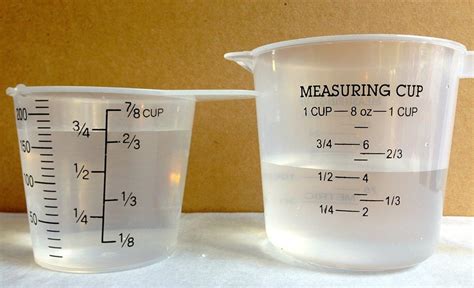How Many 1 3 In 1 2
listenit
Apr 05, 2025 · 4 min read

Table of Contents
Decoding the Enigma: How Many 1/3s are in 1/2? A Deep Dive into Fractions
The question, "How many 1/3s are in 1/2?" might seem deceptively simple at first glance. It's the kind of mathematical puzzle that can pop up in everyday life, from dividing ingredients in a recipe to understanding proportions in construction projects. However, a thorough understanding requires more than just a quick calculation; it necessitates a grasp of fundamental fractional concepts and their application. This article will dissect this problem, exploring various approaches, delving into the underlying mathematical principles, and ultimately offering a clear and comprehensive solution. We'll also explore how to generalize this approach to similar problems involving different fractions.
Understanding Fractions: A Foundation
Before we tackle the core problem, let's refresh our understanding of fractions. A fraction represents a part of a whole. It's composed of two key components:
- Numerator: The top number, indicating the number of parts we have.
- Denominator: The bottom number, indicating the total number of equal parts the whole is divided into.
Therefore, 1/2 means we have one part out of a total of two equal parts, while 1/3 signifies one part out of three equal parts. Understanding this fundamental concept is crucial for solving our problem.
Method 1: Using Division
The most straightforward approach to determining how many 1/3s are in 1/2 involves division. We essentially want to divide 1/2 by 1/3. This can be expressed mathematically as:
(1/2) ÷ (1/3)
To divide fractions, we invert the second fraction (the divisor) and multiply:
(1/2) x (3/1) = 3/2
This result, 3/2, means there are three-halves or 1 and 1/2 of 1/3 in 1/2.
Method 2: Visual Representation
A visual approach can enhance understanding, especially for those who prefer a more intuitive method. Imagine two identical circles representing the whole.
- Circle 1: Divide this circle into two equal halves. Shade one half to represent 1/2.
- Circle 2: Divide this circle into three equal thirds. Shade one-third.
Now, the challenge is to determine how many shaded one-thirds (from Circle 2) can fit into the shaded one-half (from Circle 1). By visually comparing the shaded areas, you can see that one-third fits comfortably into one-half, with half of another one-third remaining. This confirms our previous calculation of 1 1/2.
Method 3: Finding a Common Denominator
Another robust method involves finding a common denominator for both fractions. This allows us to compare them directly. The least common denominator for 2 and 3 is 6. We can rewrite our fractions as:
- 1/2 = 3/6 (multiply both numerator and denominator by 3)
- 1/3 = 2/6 (multiply both numerator and denominator by 2)
Now, we can easily see that 3/6 (one-half) contains 1.5 times the value of 2/6 (one-third). This confirms our answer of 1 1/2.
Extending the Concept: Generalizing the Problem
The core principle demonstrated in solving "how many 1/3s are in 1/2?" can be generalized to solve similar problems with different fractions. The general formula is:
(a/b) ÷ (c/d) = (a/b) x (d/c) = (a x d) / (b x c)
Where:
- a and b are the numerator and denominator of the first fraction.
- c and d are the numerator and denominator of the second fraction.
This formula provides a systematic approach to determine how many times one fraction fits into another, regardless of the specific numerical values.
Practical Applications
Understanding fraction division has numerous practical applications in various fields:
- Cooking and Baking: Scaling recipes up or down requires precise fractional calculations to maintain proportions of ingredients.
- Construction and Engineering: Accurate measurements and calculations using fractions are crucial for ensuring structural integrity and proper dimensions.
- Finance: Calculating interest rates, proportions of investments, and understanding financial ratios involve fractional calculations.
- Data Analysis: Fractions are frequently used to represent proportions and percentages in statistical analyses.
Common Mistakes and Misconceptions
Several common mistakes can arise when dealing with fractions:
- Incorrectly inverting the fraction during division: Remember to invert only the divisor (the fraction you're dividing by) before multiplying.
- Not simplifying the result: Always simplify the resulting fraction to its lowest terms for clarity and accuracy.
- Confusing addition/subtraction with multiplication/division: These operations have fundamentally different rules and procedures.
Conclusion: Mastering Fractional Calculations
The seemingly simple question of "How many 1/3s are in 1/2?" unveils a deeper understanding of fractional mathematics and its widespread applications. Through various methods—division, visual representation, and finding common denominators—we have demonstrated that there are 1 1/2 (or 3/2) 1/3s in 1/2. By mastering these techniques and avoiding common pitfalls, you can confidently tackle similar problems and apply these concepts to various practical scenarios. This knowledge empowers you not only to solve mathematical puzzles but also to approach real-world challenges with accuracy and precision. Remember to practice regularly to solidify your understanding and develop your proficiency in working with fractions. The more you engage with these concepts, the more intuitive and straightforward they will become.
Latest Posts
Latest Posts
-
How Many Inches Is 1 4
Apr 06, 2025
-
How To Find N In A Geometric Sequence
Apr 06, 2025
-
What Is Molar Mass Of Iron
Apr 06, 2025
-
What Is 4 10 In Simplest Form
Apr 06, 2025
-
Federalists Supported Ratification Of The Us Constitution Because They
Apr 06, 2025
Related Post
Thank you for visiting our website which covers about How Many 1 3 In 1 2 . We hope the information provided has been useful to you. Feel free to contact us if you have any questions or need further assistance. See you next time and don't miss to bookmark.
